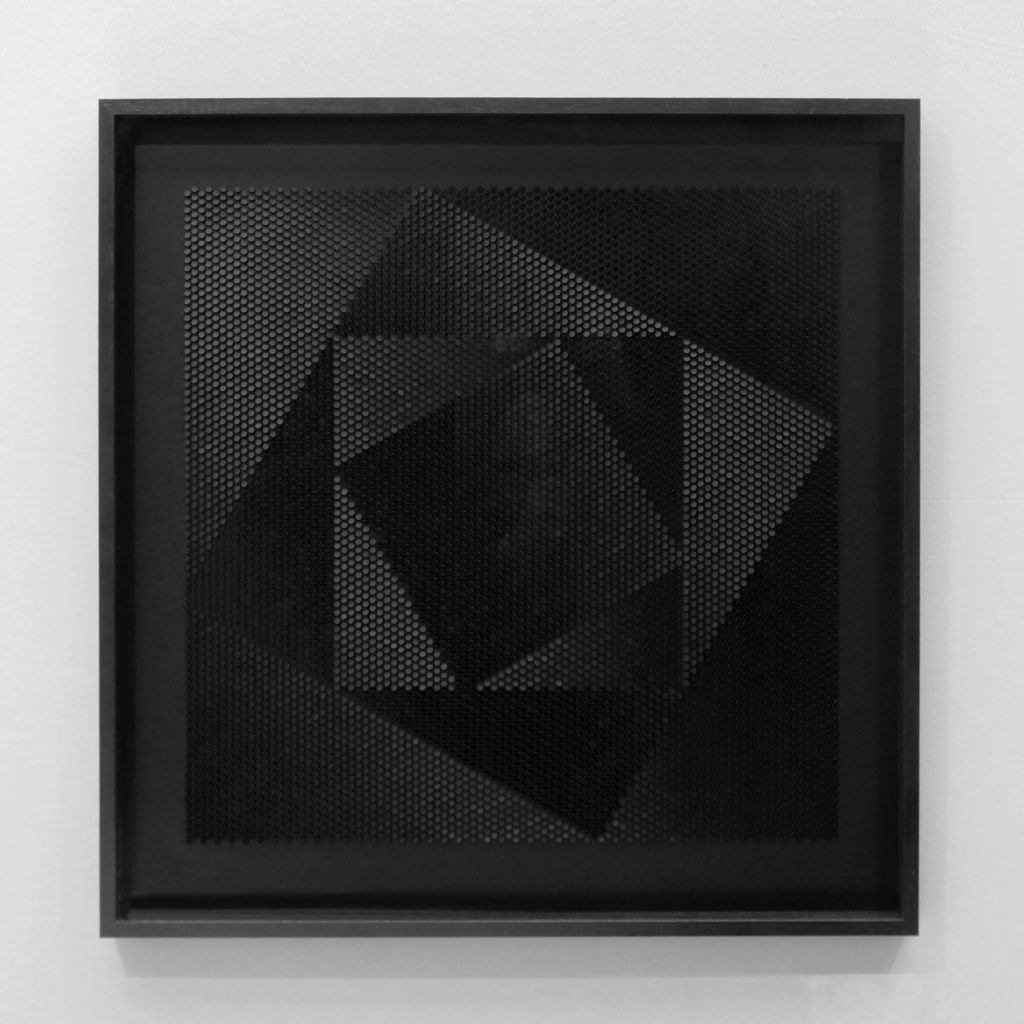From the prosthetic smile which poked fun at the flaws of our hyper-communicating societies, to the activation of paper micro-reflectors shaping space according to the vibrations of light, Sascha Nordmeyer’s world has gradually moved towards one of increased refinement. A far cry from the young designer’s condemnation of societal turmoil in his earlier pieces, his more recent work takes us on a journey to a hypnotic contemplation of an ever-shifting reality.
His enlarged lips in carmine red plastic have travelled the world. In early 2000 the ‘Communication Prosthesis’ project, named hyperLip, was born from the vivid imagination of Sascha Nordmeyer, a young Franco-German designer who had just joined the École Supérieure d’Art et de Design in Reims. He grew up near Frankfurt am Main and often spent holidays in the Champagne region of France, where his mother originated from. At the age of 20, Sascha took art entrance exams for both Strasbourg and Reims. Rejected by Alsace, it was the so-called ‘Coronation City’ of Reims which would see his talent blossom. “This facial prosthesis project was essentially a provocation. I designed it as part of a competition on items for museum shops. I was young, faced with the prospect of success and a bit shy,” he explains, in a voice still tinged with a slight accent that has never left him.

This forced smile, which alludes to the limitations of social relationships, earned him second prize in the contest organised by the Printemps du Design. “I wanted to highlight the communication void. With this prosthesis you’re permanently smiling, you’re making a good impression even if you don’t want to; you’re selling yourself perfectly, you’re successful in life.” Sascha finished his studies, and the hyperLip chapter drew to a close when the designer was hired in the luxury sector by ST Dupont. “While I was there I designed Daniel Craig’s cufflink in the James Bond film, Casino Royal,” he says.
In 2009 he returned to Reims to set up his own studio, where he dusted off the famous prosthetic smile. “I got thinking about an exhibition with a series of photographic portraits, featuring people from various professions wearing the prosthesis: a politician, a model, a midwife, a cyclist, etc.” It was an instant success. The images were published everywhere, and in 2011 he received an email from the MoMA in New York, informing him that he would feature in their ‘Talk to Me’ exhibition. The item was then mass produced and marketed by a publisher from Los Angeles. But the multiple copies in circulation soon led to the end of its production, marking the (provisional?) end of the hyperLip chapter.



455,000 reflectors to turn
“At the studio in Reims I made a lot of furniture and lighting mock-ups. Then I discovered working with paper and very precise digital cutting with a plotter. ” An area of experimentation which he relished exploring, until he found the tool rather limited when it came to creating very complex shapes. A trip to Singapore and an immediate fascination with the tropical flora there gave him the opportunity to put his research on paper cutting into practice. For a solo show at the Ddessin in 2016, he hung an enormous mobile entitled ‘Le Paradis et la Tempête’ from the glass roof of the Richelieu studio. The mobile comprised numerous imaginary flowers made from coloured paper, some of which had extremely thick and thin pistils, cut with the plotter. “I love bridging the gap between digital technologies and the age-old practices of drawing and folding,” he explains. A mix of techniques that he is taking one step further with the directions of his latest work. “While working with the plotter, I had the insight to cut a small circular shape in the paper, leaving it attached in such a way that the circle could be turned in a certain direction, like a micro-reflector. ” Light-sensitive surfaces are then created whereby the reflectors, through their various angles and directions, formulate a spectrum of shades which look like geometric shapes. “The design also has a kinetic effect which depends on the angle of the viewer’s gaze. It’s an interactive and shifting piece,” explains Sascha.



During the installation process, hundreds or even thousands of opercula are turned by hand in a rhythmic movement, using a type of stamp to give them a precise angle. The visual artist makes reference to the Gainsbourg song, where the stamper of Lilas creates a carnival of confetti. A lengthy installation process – 455,000 reflectors need to be turned for large exhibitions – which are “like meditation sessions,” he says.
When facing the artwork, time and space are frozen in a hypnotic contemplation; shades of black and white make way for shapes to emerge in a slow dance, changing in line with the surrounding light and the viewer’s position. Paper mosaics which create a dotted reality against the light.





